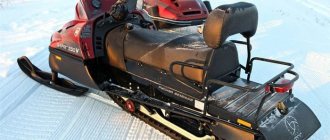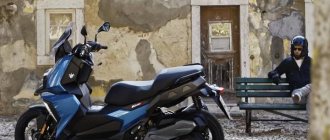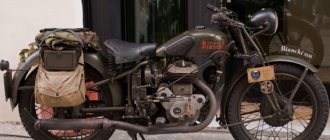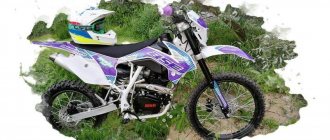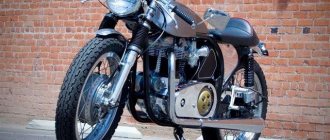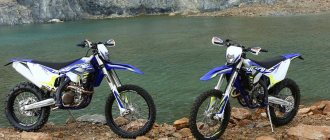Beta's EVO trial motorcycles have been improved again.
For the 2016 models, engineers focused on the engines, giving each engine its own character. The Sachs shock absorber found on all EVO two-strokes and four-strokes has undergone some changes to improve rebound performance, allowing the shock and suspension to perform better. Since motorcycle trials as a sport is developing every day, improvements to these motorcycles are aimed at improving the feel of the motorcycle when riding on the wheelie.
Trial motorcycle EVO with a displacement of 250/300 cm³
Changes to 300cc and 250cc models
- The crankshaft has become more rigid, thus increasing inertia and mass centralization, which provides better balance
- Improved inertia and rigidity thanks to new connecting rod and crankpin
- New internally redesigned muffler provides significantly more torque at low and medium speeds, as well as a quieter engine operation
Changes in models with a displacement of 300 cm³
- New combustion chamber to improve engine response precision and power output
Changes in motorcycle models with a displacement of 250 cm³
- The completely revised cylinder head features new intake and exhaust valves for increased practicality.
- New combustion chamber with updated geometry
Trial motorcycle EVO with a displacement of 200 cm³
The Beta EVO 200 trial bike is now based on 250/300 engines . Previous EVO 200 models were based on the 125cc version, but the 2016 engines will not only be based on the 250/300, but will also have their own personality, making them interesting for modern enthusiasts.
- The new crankcase was adopted from engines of models with a displacement of 250/300 cm³ (and not, as before, from a 125 cc engine)
- A new crankshaft with a lighter flywheel provides better weight distribution, mass centralization and improved inertia. The most striking result of this is the improved handling of the motorcycle.
- Even the connecting rod is new. Thanks to improved rigidity, engineers were able to significantly reduce vibrations, making the motorcycle even more enjoyable to ride.
- New lighter piston.
- Increased compression ratio in the crankcase
Trial motorcycles
Motorcycles belonging to the “Trial” class are used in a sport such as motorcycle trials, a technical sport that involves overcoming various obstacles and performing various tricks on a motorcycle (for example, jumps, riding on rocks). Obstacles can be either natural or artificial. Another important detail is that the athlete must not touch the obstacles with parts of his body. Motorcycles of this class are manufactured specifically for participation in such competitions on tracks where other motorcycles cannot pass. To better overcome obstacles, a trial motorcycle is created with the lowest possible weight. The engine is adapted to overcome obstacles, and its cubic capacity can vary from 50 to 125 cubic meters. These motorcycles have good traction, but a low maximum speed. These motorcycles also have a durable frame and a fairly energy-intensive suspension, which must be as reliable as possible to withstand repeated jumps and difficult trails. The suspension has long travel and the motorcycle itself has high ground clearance, which helps it overcome obstacles.
Often there are motorcycles of this class that do not have lighting devices and a dashboard, and the engine is started by a kick starter; they do not have an electric starter or battery, to reduce weight. They also do not have seats, since they are not needed when driving off-road and performing stunts. The amount of plastic on them is reduced to a minimum. The plastic itself must be of high quality and have elasticity so as not to crack during impacts. These motorcycles use special off-road tires with a special tread and large lugs. The brakes are quite weak, but they are quite sufficient for dirt or sandy surfaces.
Their exhaust sound is quite loud, they have a direct-flow system or an exhaust system with a resonator. Modern trial motorcycles have such characteristics, and the roots of this sport go back to the beginning of the twentieth century in Great Britain, where the first unofficial motorcycle trials competitions took place. But then this sport looked different, the main emphasis was on balancing while passing obstacles. But despite the fact that this sport originated in the UK, the best racers are trained in Spain. Also, the best trial motorcycles are produced in Spain; champions have often become champions on them.
Trial motorcycle EVO with a volume of 125 cm³
This trial bike has always been great for new riders of Beta motorcycles. It was this motorcycle that allowed Marco Fialetti to win the world title in 2015. This year it continues to grow in terms of performance. The lively, wonderful 125 has now gained more power, which will bring pleasure to both the younger generation and older riders.
- The modified crankshaft has improved inertia.
- The new connecting rod is shorter in order to increase crankcase compression and therefore achieve better low-end performance.
- The cylinder valves have been redesigned to better match the improved torque.
Trial motorcycle EVO SS
Beta has seen fit to bring the popular Evo SS (Super Smooth) trial bike to market in two two-stroke versions - 250 and 300. These SS models are aimed at riders looking for a bike with a smoother power output. The new 2016 SS 250 model, just like the Beta 300, is a standard model with the following elements added:
- Titanium exhaust
- New flywheel
- The front sprocket has become smaller
- Larger diameter Domino handles
- New throttle and throttle body design provide better power output
- Special sticker “Super Smooth”
- Available in two versions with two-stroke engines - with a displacement of 250 cm³ and 300 cm³.
Mad Max Evo also returns. A great combination between the standard Evo and the XTrainer. Sport models are available in 125, 200, 250 and 300 two-stroke versions, as well as 250 and 300 four-stroke versions.
Design and types of off-road motorcycles
Today, let's take a quick look at the characteristics of off-road motorcycles.
Cross motorcycle : simple because in principle it is not homologated and is intended for sports. The ideal combination of power with low weight and ergonomics. More and more factory bikes are getting closer to perfection in competition, and we don't have to spend a fortune on extra tuning to get them running successfully. Parts are known to cost less than 65cc motorcycles. cm for the five hundred giants from the MX3 class. It's worth noting that motocross has made its way into regular four-stroke motorcycles in just a few years.
Large selection of Cross helmets from Europe
Hard enduro : stunt cross motorcycle. Main characteristics: homologation, other engine characteristics, engine and suspension adjustments, as well as other tires. Full electrical equipment, including lighting. At first glance, the differences are not big, but it's like comparing a racing car with a rally car. Hard enduro is a typically professional motorcycle. However, there is a trend towards more tinted enduro designs. Moreover, fewer and fewer of these bikes are used in enduro rallies, and this is due to stricter emissions standards.
off-road motorcycle
Soft Enduro (DualSport) is a dual-purpose motorcycle, it can be used both for asphalt and off-road riding. Incorrectly, this group is sometimes called enduro, so let's not confuse the concepts! As less extreme ones, they have less power. More weight and more versatile tires make this bike more suitable for road trips. The canonical example is the Yamaha DT - this multi-purpose off-road bike is distributed in many countries.
Engine sizes for DualSports models range from 50cc. cm – 600 cc. cm or more. With less effort, they will serve us longer. The suspension is suitable for driving on paved roads, better than off-road, where large jumps are often possible...
Tourist enduro is a motorcycle for riding long distances, on various asphalt, gravel roads, etc. From a technical point of view, these motorcycles are far from the above-mentioned two-wheelers, although they have many common features. Long suspension travel, powerful, flexible engine, versatile tires and long-distance endurance. The handlebar position on this enduro is such that you will not feel tired even after several hundred kilometers. Excellent motorcycles for those who love long excursions. The most famous representative is the BMW R 1200 GS.
BMW-R-1200-GS-Adventure
Funduro : This is a short, lightweight touring enduro with supermonto wheels. The first of its kind is the Yamaha TDM: good engine, good brakes, comfortable upright steering position, high ground clearance and small wheels. It's closer to road bikes than off-road bikes. Tires typical for driving on asphalt roads: driving even in easy-to-pass countryside can be dangerous.
Funduro
Supermoto/power bikes are the so-called hybrids of the nineties. Essentially motocross motorcycles with 17-inch wheels on wide tires, tough; with reduced suspension, with excellent brakes. Great driving pleasure and super agility – that's what racers love most: a firm ride both on the road and in the field. You can combine driving styles: off-road and track.
Supermoto , or city motorcycle for supermoto lovers. Increasingly popular for everyday travel. Characteristic features are low weight, good engine and high saddle. The so-called “narrow waist” is a trump card for maneuvering between cars. A huge advantage is also greater reliability, which is important for the average motorcyclist because the wallet remains full.
A trial motorcycle is similar to a bicycle with an engine; it is a machine for riding over rough terrain. In general, trials is one of the oldest outdoor sports. Driving such a motorcycle is a big challenge and requires many hours of training. There are, however, also World Trials Championships. Leading brands: Beta, Gas-Gas, Spanish Montesa.
Trial motorcycle
Post Views: 3,477
Similar articles:
No similar




